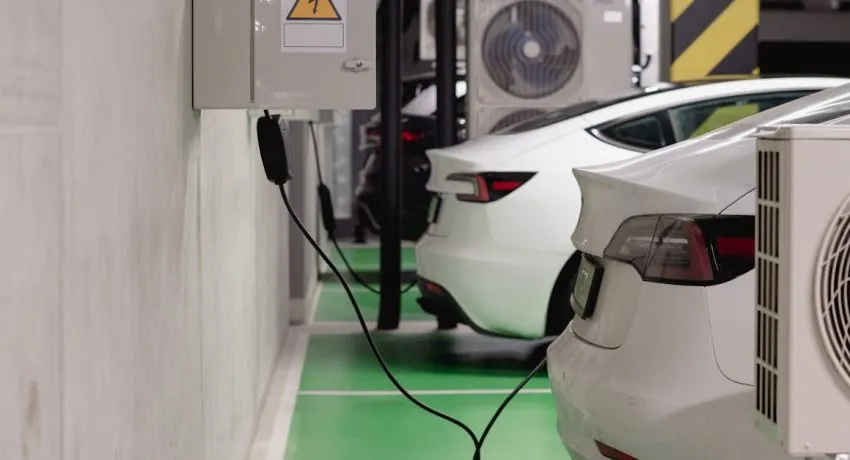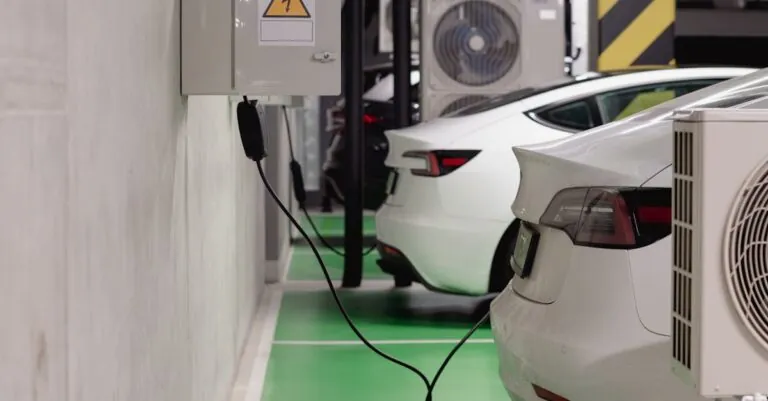In a world where electric vehicles are zooming into the future, finding a charging station nearby shouldn’t feel like a scavenger hunt. Imagine cruising down the road, your EV humming happily, only to realize your battery’s running low. Panic sets in as you wonder if you’ll have to resort to hitchhiking or, worse, walking. But fear not! Locating an EV charging station has never been easier.
Table of Contents
ToggleUnderstanding EV Charging Stations
Electric vehicle charging stations play a crucial role in supporting the expanding EV market. Finding a nearby charging station alleviates range anxiety for many drivers.
Types of EV Charging Stations
Level 1 charging stations utilize a standard 120V outlet, making them common in homes and workplaces. Level 2 charging stations operate on 240V and charge vehicles faster, often installed at public or commercial locations. DC fast chargers provide rapid charging capabilities, delivering up to 350 kW, allowing drivers to recharge their EVs in a short time. Each type serves different requirements, with Level 1 suitable for overnight charging and fast chargers ideal for quick stops.
Benefits of Using EV Charging Stations
Utilizing EV charging stations enhances convenience for electric vehicle owners. Accessibility to multiple charging options encourages longer trips, expanding travel possibilities. Environmental benefits arise as EVs reduce carbon emissions, contributing to sustainability efforts. Cost savings also define the experience, with many public charging stations offering free or low-cost options compared to traditional gasoline prices. Additionally, using charging stations promotes the growth of renewable energy sources integrated into the grid.
How to Locate EV Charging Station Nearby
Finding an EV charging station nearby is straightforward with the right tools. Several resources—mobile apps and online maps—streamline the process.
Mobile Apps for EV Charging
Mobile apps provide real-time information about charging stations. They often indicate location, availability, and even charging speeds. Popular apps like PlugShare and ChargePoint feature user reviews, helping drivers select optimal stations. Search filters allow users to find specific types of chargers, catering to individual needs and preferences. Notifications about charging status or completed charging sessions keep users informed while they wait.
Online Maps and Resources
Online maps offer an alternative way to locate charging stations. Google Maps prominently displays EV charging stations along with route options. Users can filter results based on station types, enhancing the experience. Websites like ChargeHub and Alternative Fuels Data Center provide comprehensive directories of charging locations. Resources often include charging station details, such as hours of operation and power levels available, aiding in trip planning.
Factors to Consider When Locating Charging Stations
When locating EV charging stations, several factors come into play. Each factor significantly influences charging convenience and efficiency.
Charging Speed
Charging speed varies among station types. Level 1 chargers provide slow charging, taking up to 12 hours for a full charge. Level 2 chargers offer faster charging, typically completing in 4 to 6 hours. DC fast chargers are the quickest, recharging a battery to 80% within 30 minutes. Selecting a charging station that matches individual needs can reduce wait times. Understanding the charging speed helps drivers plan stops effectively.
Accessibility and Availability
Accessibility significantly impacts the usability of charging stations. Station locations should prioritize convenience, being close to main routes or popular destinations. Availability represents another key consideration. Some stations experience high demand, resulting in waiting times. Using mobile apps can assist in checking real-time availability. Ensuring accessibility and availability facilitates smoother charging experiences, ultimately encouraging EV adoption.
Future of EV Charging Infrastructure
The future of EV charging infrastructure appears promising, driven by rapid advancements and market demands.
Innovations in Charging Technology
Innovative technologies are reshaping how drivers charge their electric vehicles. Wireless charging pads offer a more convenient option, allowing drivers to charge without plugging in. Additionally, ultra-fast charging technology continues to develop, significantly reducing charging times. Some companies are introducing battery swapping stations, enabling drivers to exchange depleted batteries for fully charged ones in minutes. These innovations not only enhance user experience but also support widespread EV adoption by addressing common concerns related to charging duration and accessibility.
Expansion of Charging Networks
Charging networks are expanding rapidly to meet the needs of increasing EV users. Through partnerships between governments and private companies, new charging stations are being installed along highways and in urban areas. Reports indicate that the United States plans to increase its network by over 100,000 public charging stations by 2025. Retail locations, parking garages, and workplaces are incorporating charging stations to enhance convenience for drivers. This growth creates an integrated infrastructure that supports seamless travel across regions, reducing range anxiety and promoting eco-friendly transportation.
Finding an EV charging station nearby has never been easier. With the rise of mobile apps and online resources drivers can access real-time information about charging locations and availability. This convenience not only alleviates range anxiety but also enhances the overall electric vehicle experience.
As the charging infrastructure continues to expand and innovate drivers can look forward to more accessible and efficient options. Embracing these advancements supports a sustainable future and encourages the transition to eco-friendly transportation. With the right tools and knowledge drivers can confidently navigate their journeys while reducing their carbon footprint.




